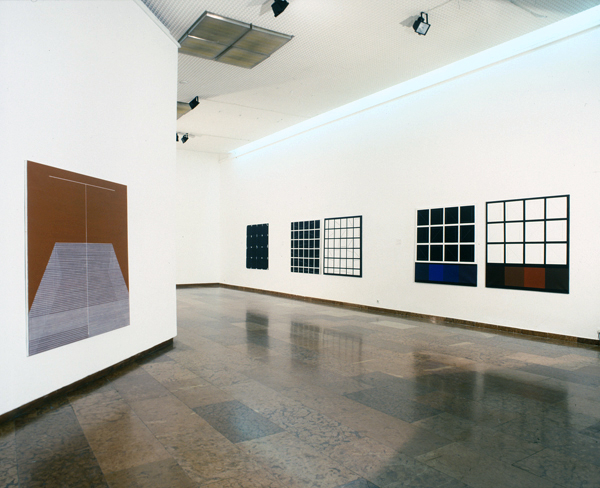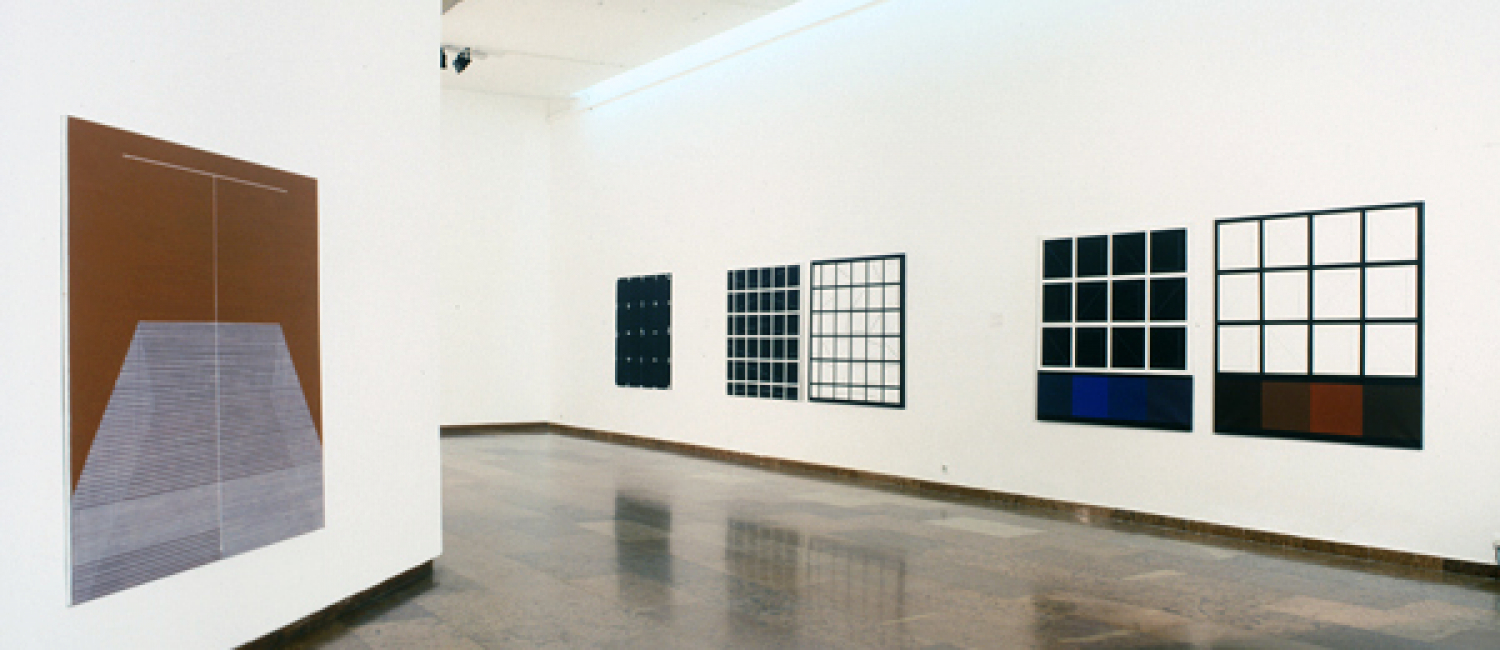In his work of the last fifteen years, Tamás Konok has proved himself a master of architecture of the modern spirit. In works on paper canvas, and other two-dimensional supports, the artist has constructed a panoply of richly evocative abstract designs, each a study in movement as much spiritual as pictorial. Konok's art is a dynamic investigation of the emotional authority and intellectual integrity, which a rigorously controlled abstraction can effectively communicate to the viewer. Moreover, each work of Konok's art betrays a meticulous formal structure, which creatively establishes a historical and pictorial continuum with the classic character of modern abstraction.
Like the pioneering abstractionists of our century Konok seeks to create a template for a perfect world of clear, rational and affecting relationships. Through the carefully controlled manipulation of line, rich layering and juxtaposition of colours, and creatively balanced geometrical forms, the painter constructs new universes of ideal formal relationships which the viewer tart apprehend rationally and contemplate emotionally.
The thin linear rays, which frequently traverse the surface planes of colour, provide Konok's works with pictorial energy and compositional order. They help to stabilise and direct the formal movement across the surface while inviting one to penetrate the fluctuant spaces created by the resonant layers of colours. The network of lines create art immaterial forte-field whose speed of implied movement is a function of the thickness, angle, and even hue of the straight lines. Together with the fields of colour, the linear-patterning imparts a rhythmic order to the geometry of the composition.
Konok's paintings and drawings may best be understood as a dynamic continuum between the two-dimensions of the surface plane and the emotional depth established by the layering of the coloured forms. Both works together to establish a concrete “formal system” which not only engages the viewer emotionally and intellectually but which constitutes a historical dialogue with the century's other masters of modern abstraction. In keeping faith with the pioneers of non-objective art, Tamas Konok has elegantly demonstrated that a refined control of purely formal means is the best means to convey the “harmony of the thought process” itself.

